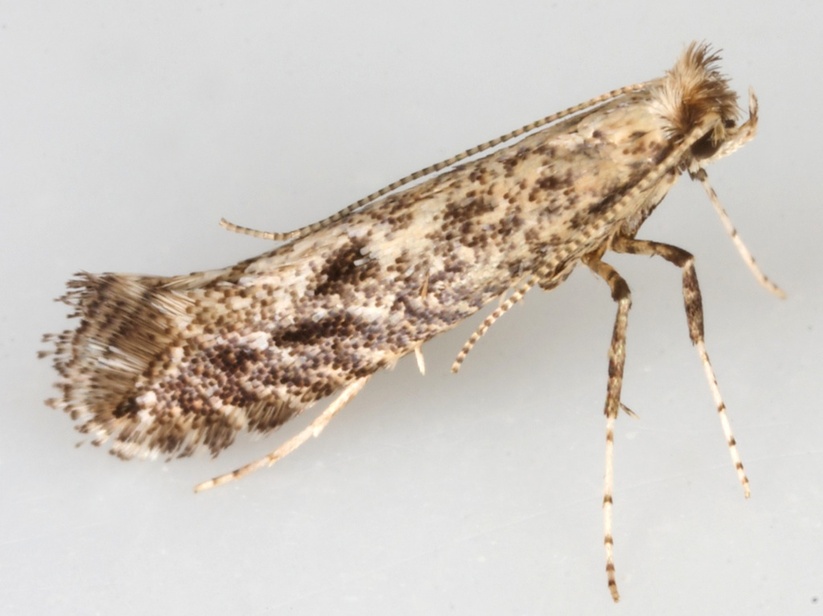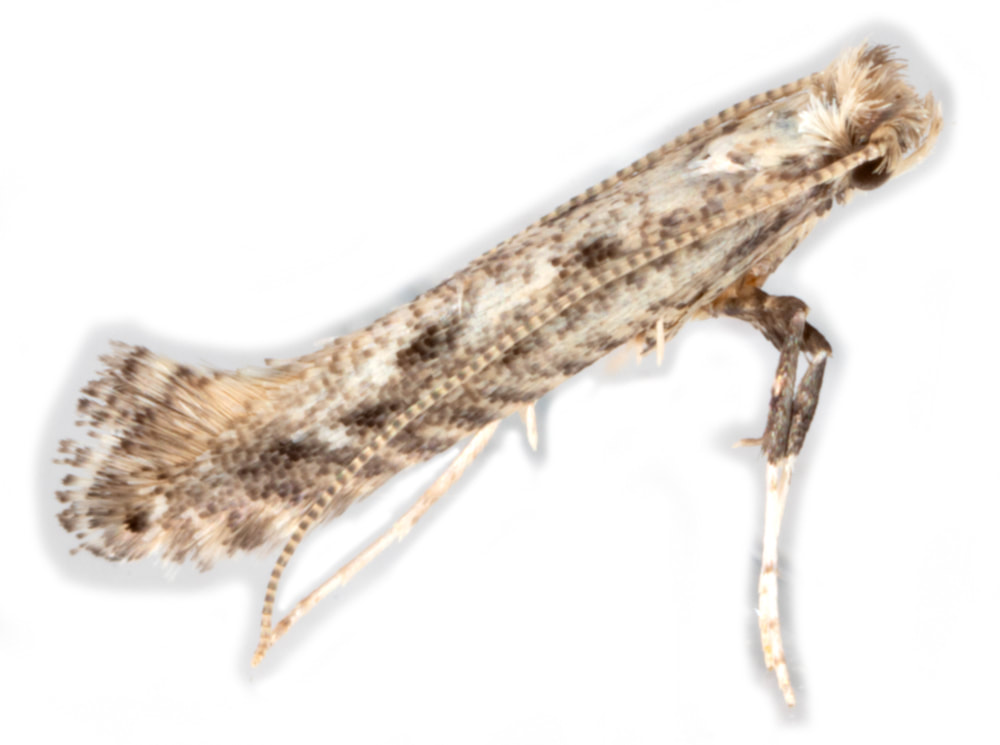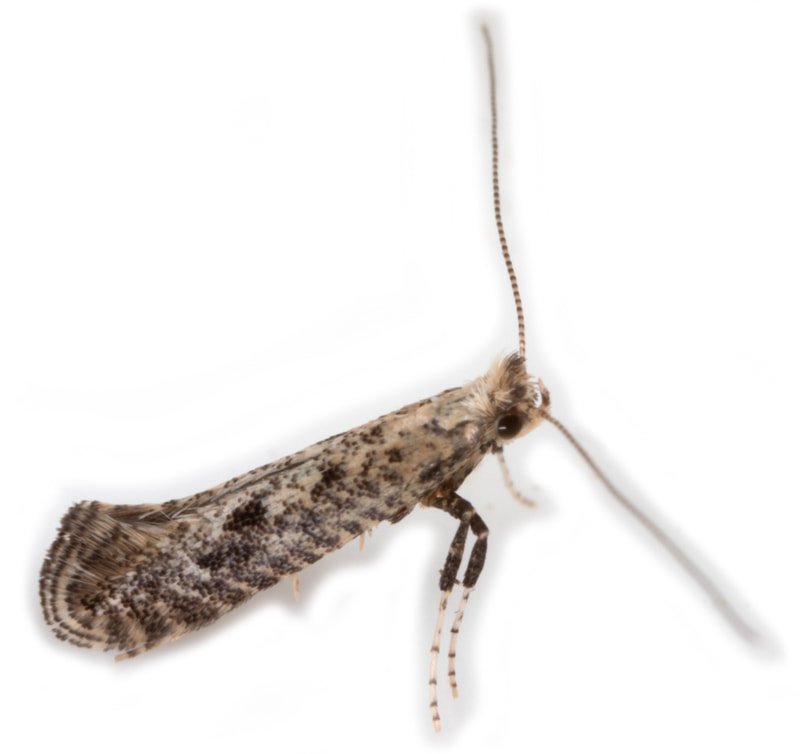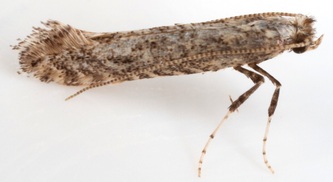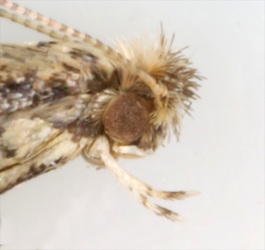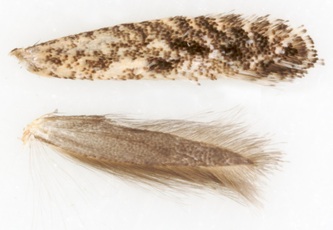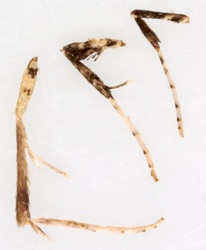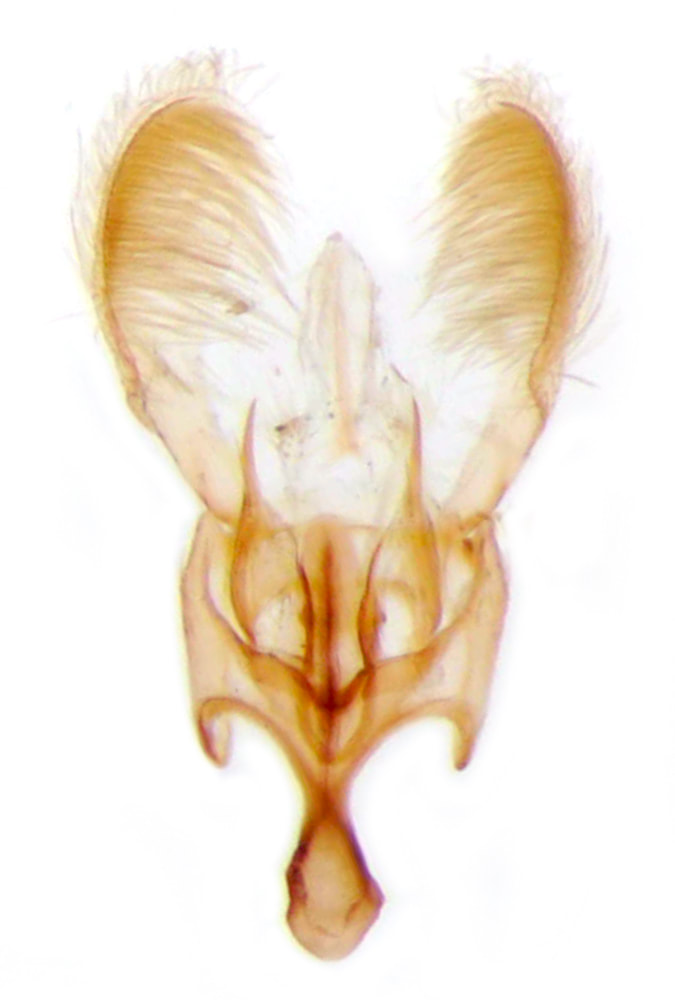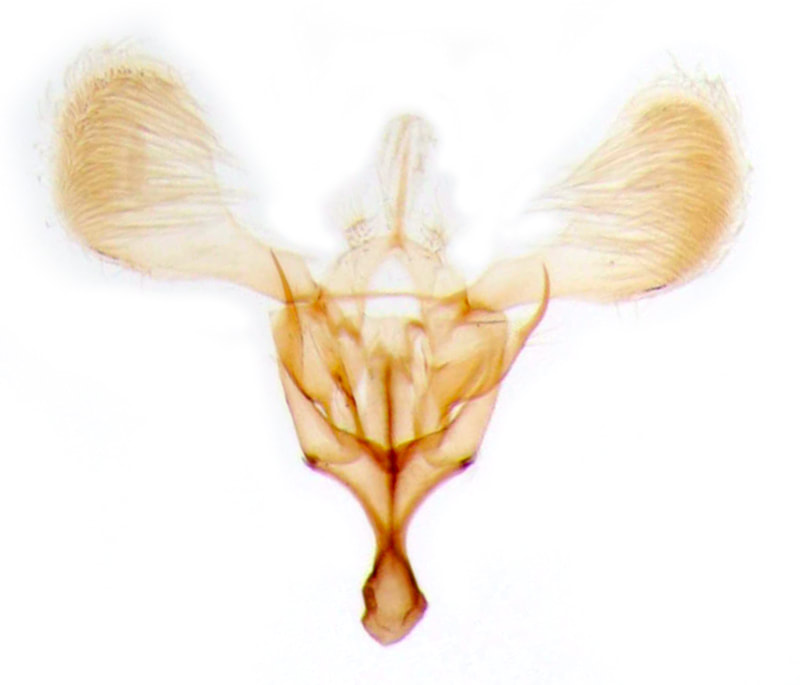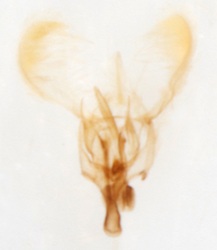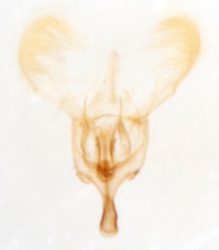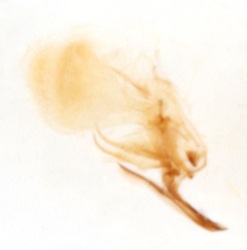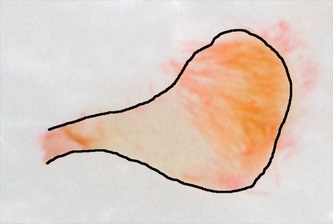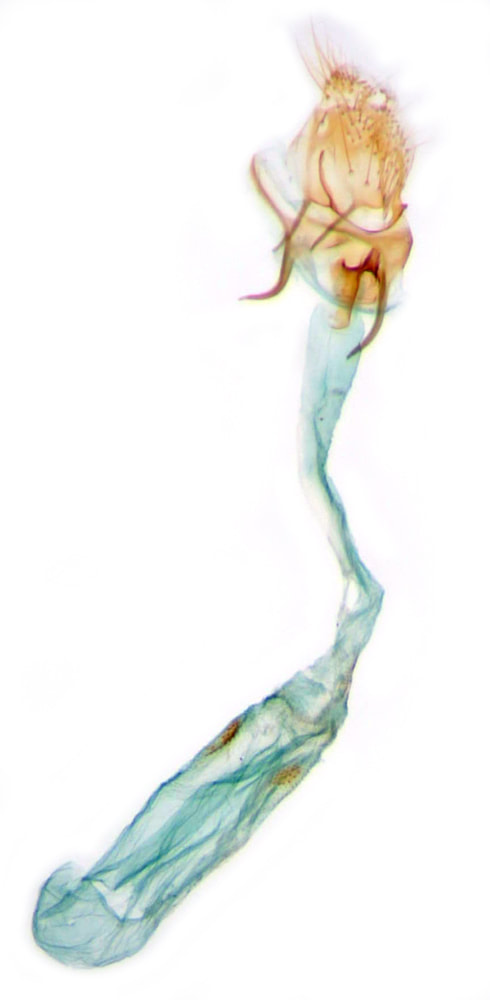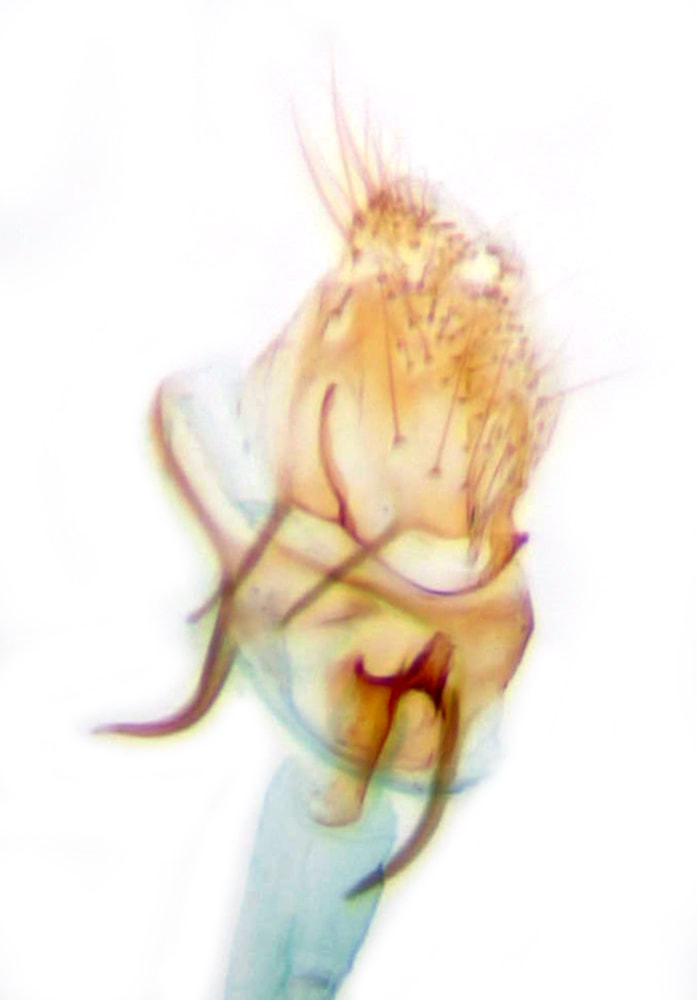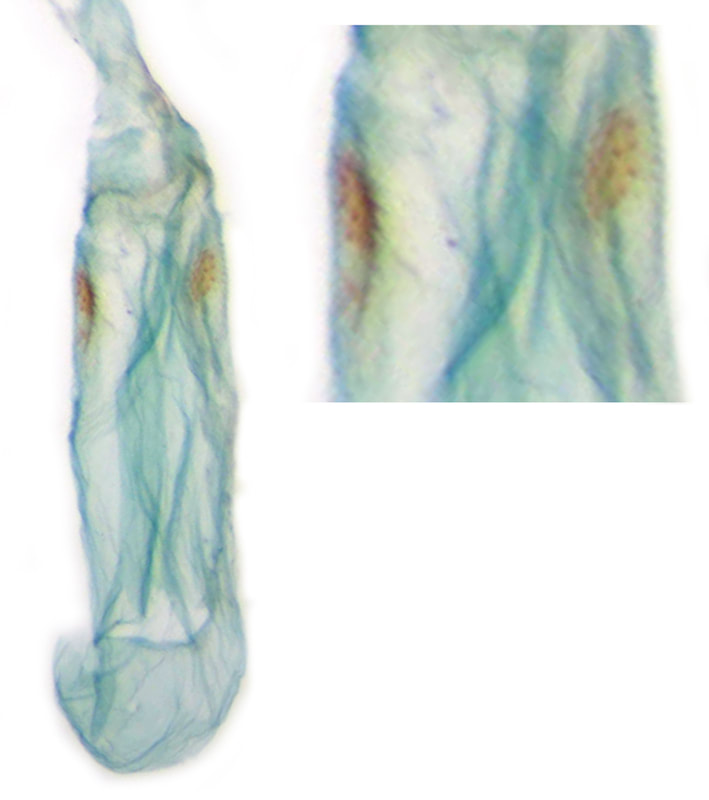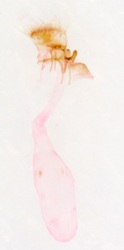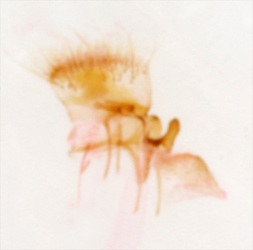15.029 Parornix devoniella (Hazel Parornix)
ws: 9-10mm; bivoltine May, Aug; Hazel (Corylus avellana); common in woodland and hedgerows in England & Wales, local in Scotland.
ID: Head rough-haired; forewing whitish heavily irrorate fuscous, without a strongly contrasting white pattern, without a subcostal white streak from base to 1/3, and not tinged ochreous; terminal cilia not white-tipped; labial palp with S3 dark banded; this leaves 5 species that really need genital examination to confirm ID although the clear dark fuscous band on labial S3 probably limits the choice to P.finitimella, P.devoniella and P.anglicella
Male genitalia:
1. No sclerotised portion of vesica beyond the aedeagal sheath
2. Saccus longer than wide with a substantial blob-end
3. Valva: lateral margin fairly evenly rounded
4. Juxta lobes medium length, globular in basal half then abruptly narrow in apical 1/2
Female genitalia:
P.torquillella differs from other Parornix species in having a poorly sclerotised sterigma and the ductus bursae is shorter than the bursa copulatrix. It is not clear whether the position of the blotchy signa in the bursa copulatrix has discriminatory significance. The figure in MBGBI2 shows 1 signum while the photo at http://www.dissectiongroup.co.uk/page96.html shows 2.
The 4 Parornix species show well-sclerotised sterigma and the ductus bursae is at least as long as the bursa copulatrix.
The ductus bursae has a twist at 2/3 from the ostium bursae in P.devoniella and P.scoticella, is straight and broad in P.anglicella and is narrow, relatively long and may have a twist at 1/4 in P.finitimella. The sterigma lamella ante-vaginalis in P.anglicella appears to have a small bow-tie shape with a smoothly curved upper (posterior) margin and a notched lower margin. In P.devoniella the sterigma appears in the form of a triangular plate broadest at the lower (anterior) margin. The shape and sclerotisation of the sterigma is not clearly drawn for the P.scoticella or P.finitimella. The apophyses anteriores and posterioires are longer in P.devoniella than in the other 3 species extending well below the lower margin of the sterigma. Based on the shape of the sterigma and the ductus bursae this specimen must therefore be P.anglicella.
Note that the date I obtained specimen §1 is outside the flight period quoted in MBGBI2, although Hants Moths gives a much more extended flight season.
Male genitalia:
1. No sclerotised portion of vesica beyond the aedeagal sheath
2. Saccus longer than wide with a substantial blob-end
3. Valva: lateral margin fairly evenly rounded
4. Juxta lobes medium length, globular in basal half then abruptly narrow in apical 1/2
Female genitalia:
P.torquillella differs from other Parornix species in having a poorly sclerotised sterigma and the ductus bursae is shorter than the bursa copulatrix. It is not clear whether the position of the blotchy signa in the bursa copulatrix has discriminatory significance. The figure in MBGBI2 shows 1 signum while the photo at http://www.dissectiongroup.co.uk/page96.html shows 2.
The 4 Parornix species show well-sclerotised sterigma and the ductus bursae is at least as long as the bursa copulatrix.
The ductus bursae has a twist at 2/3 from the ostium bursae in P.devoniella and P.scoticella, is straight and broad in P.anglicella and is narrow, relatively long and may have a twist at 1/4 in P.finitimella. The sterigma lamella ante-vaginalis in P.anglicella appears to have a small bow-tie shape with a smoothly curved upper (posterior) margin and a notched lower margin. In P.devoniella the sterigma appears in the form of a triangular plate broadest at the lower (anterior) margin. The shape and sclerotisation of the sterigma is not clearly drawn for the P.scoticella or P.finitimella. The apophyses anteriores and posterioires are longer in P.devoniella than in the other 3 species extending well below the lower margin of the sterigma. Based on the shape of the sterigma and the ductus bursae this specimen must therefore be P.anglicella.
Note that the date I obtained specimen §1 is outside the flight period quoted in MBGBI2, although Hants Moths gives a much more extended flight season.
§1 Cyffdy Farm, Gwynedd; 22/06/2010; female; fw 4.5mm
§2 Strumpshaw Fen, Norfolk; 16/05/2013; male; fw 4.9mm
§3 Orlestone Forest, Kent; 07/07/2019; female; fw 3.8mm
§4 Pound Wood, Essex; 05/08/2020; male; fw 3.8mm
All images © Chris Lewis
§2 Strumpshaw Fen, Norfolk; 16/05/2013; male; fw 4.9mm
§3 Orlestone Forest, Kent; 07/07/2019; female; fw 3.8mm
§4 Pound Wood, Essex; 05/08/2020; male; fw 3.8mm
All images © Chris Lewis
Page published Feb 2011 (§1) | §2 added 05/06/2013 | §3 added Feb 2020 | §4 added 04/02/2021
